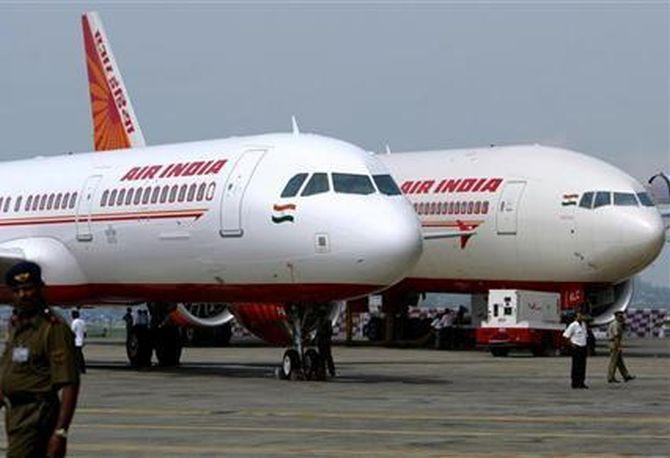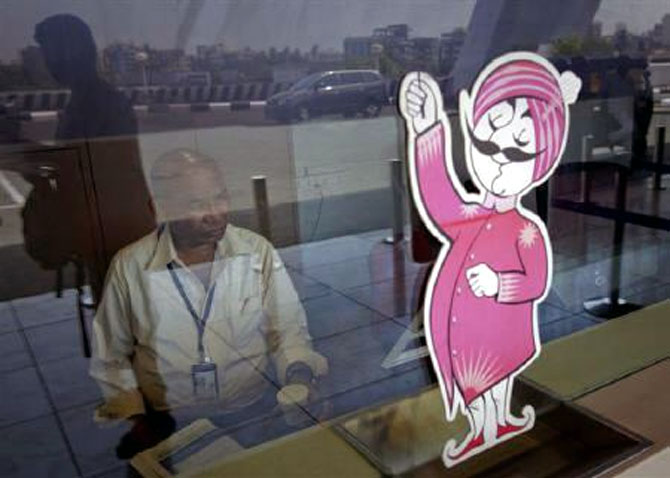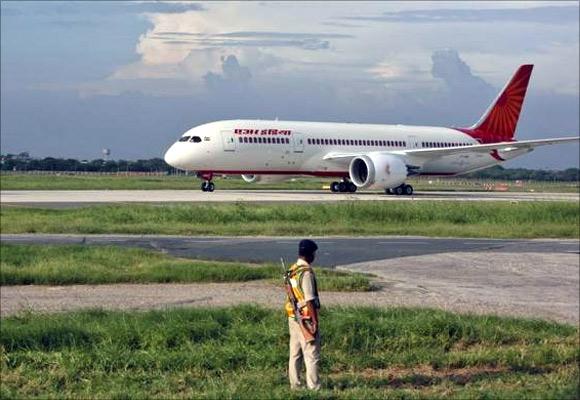
It has staff even in places it has no touchdown, notes Sharmistha Mukherjee
Despite burgeoning losses in 2013-14, Air India continues to maintain international offices, with a fifth of these at destinations where it has no direct operations.
Examples are at Washington, Toronto, Los Angeles, Cairo, Teheran, Vienna, Amsterdam and Chittagong.
The government-owned airline says these have been set up to cater to the travel needs of Indian-origin people at these bases.
“What is the need of stationing employees in places where AI does not even have direct operations?
“Ticketing and marketing can be realised more cost-effectively online.
“The website can be spruced for these,” said a source, who did not wish to be identified.
Please . . .
Please click here for the Complete Coverage of Budget 2014 -15

Another executive said despite having employees and offices at these nine locations, the airline has also appointed local general sales representatives at six of these.
AI has around 170 employees across offices in 46 international destinations.
The practice of running operations at offline stations continues at a time when losses widened to Rs 5,400 crore (Rs 54 billion) against the target of Rs 3,989 crore (Rs 39.89 billion) in the financial year ended March 31, primarily on account of high operational cost.
The carrier cut net loss to Rs 5,100 crore (Rs 51 billion) at the end of 2012-13, from Rs 7,100 crore (Rs 71 billion) in 2011-12.
Please . . .
Please click here for the Complete Coverage of Budget 2014 -15

The second quarter of 2013-14 was the worst; it missed its revenue target by Rs 700 crore (Rs 7 billion) because of lower passenger load and a local fare war.
The airline, however, hit the revenue target for FY14, of Rs 19,300 crore (Rs 193 billion).
The government approved a massive rescue package of Rs 30,000 crore (Rs 300 billion) in mid-2012, running till 2020-21.
Since then, the carrier has been surviving on doled-out equity.
It continues to register variable cost losses in 19 routes, six of which are international ones.
Of these 19, the domestic loss-making routes include Mumbai-Kolkata and Delhi-Bengaluru; the international route includes Delhi-Sydney.
Please . . .
Please click here for the Complete Coverage of Budget 2014 -15

A senior executive said, “The independent directors (on the board of directors) have asked for specifics of profit and loss figures, and load factors, across routes to determine the cause.”
They’re looking at ways to make routes profitable.
The airline has stopped flying on routes where it was not meeting jet fuel costs in FY14, by cutting costs, cancelling flights and changing the type of aircraft deployed.
AI put a new Boeing 787 Dreamliner on the Delhi-Tokyo route, after which the airline started making money on the route.
It is considering discontinuing some domestic services which do not meet variable costs.
Please . . .
Please click here for the Complete Coverage of Budget 2014 -15

Turbulent times
Please click here for the Complete Coverage of Budget 2014 -15